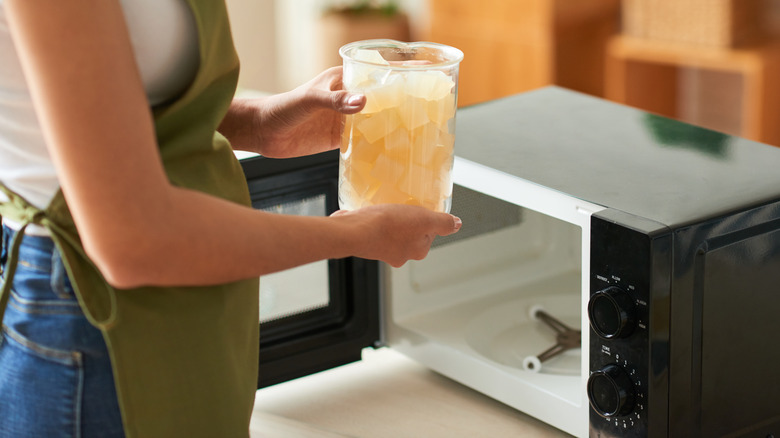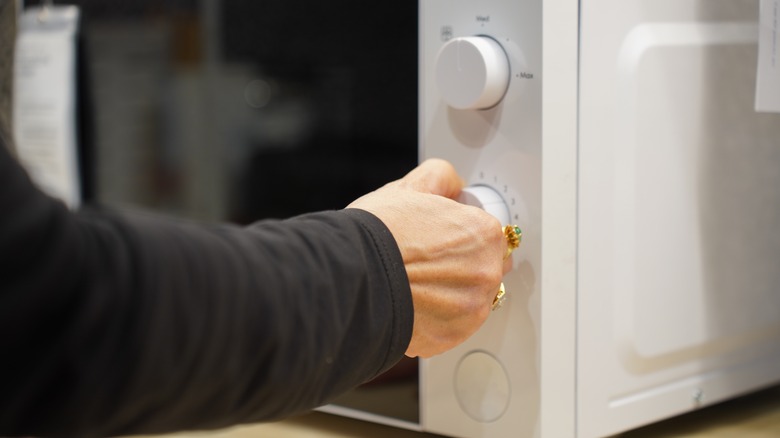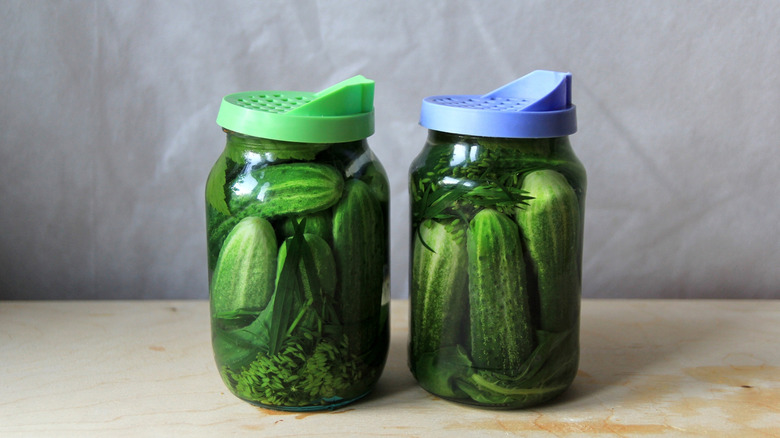7 Tips That Will Help Protect Your Glass Jars Inside The Microwave
The microwave is useful for a number of cooking, baking, and reheating purposes. However, there has been recent discussion over the last few years regarding the potential health concerns of microwaving plastic. For example, the American Journal of Medicine states that two common ingredients in plastic containers — bisphenol A (BPA) and phthalates — have been a cause for concern with toxicologists because they may have negative effects on fertility, immune system functions, and other bodily processes. Many people are therefore making the switch to glass tupperware and jars for microwaving their food.
This is a great option and can be good for the environment, too, as glass tends to have a longer life span and can be recycled indefinitely. But how do you safely microwave glass jars without cracking or shattering them? By following tips such as checking for damage, heating in quick bursts, and ensuring proper ventilation, microwaving your glass containers will be much safer. This allows you to rest a little easier when using this common household appliance. These tips can be easily incorporated into your daily routine to help protect both your glass jars and the microwave itself.
Look for damage
Similar to a piece of clothing with a rip in it, jars that have damage are more susceptible to cracking or shattering. Before you microwave any of your glass jars, you should always check for any chips or broken areas. This is particularly true for old or thrifted jars, as they may have sustained damage during previous uses. If you do find one that is damaged, it is best to recycle it, as the possibility of glass fragments breaking off means it is no longer food safe and could be dangerous to handle.
Test for microwave heat resistance
The next thing you'll want to do, particularly for a new jar, is check if it is microwave safe. Some jars have labels, but if not, you can check by filling them with water and microwaving them for one or two minutes. If a jar stays relatively cool, then it is likely safe to microwave. If it gets hot, this could mean that it will be prone to cracking in the future. Why not make the most of this quick task and add a lemon to the water to easily get a sparkling clean microwave at the same time?
Only heat from room temperature
Microwaves are designed to heat things quickly. So, warming a jar from the fridge or freezer in a microwave could result in shattering or cracking due to the sudden increase in temperature. A rapid temperature change like this causes different areas of the glass to expand at varying rates, resulting in breakage. Instead, try leaving the jar out at room temperature for around an hour to allow it to warm up. This trick reduces the amount of sudden stress on the material and can be used when microwaving similar glass products, such as baking pans and bowls.
Microwave in intervals
To further protect your jar, it may also be a good idea to heat it in short bursts. This will offer the glass a chance to adjust to the increasing temperature, minimizing the possibility of cracking. This is a good idea not only to protect the jar, but also to prevent injury, as you will be able to more easily manage the temperature of the jar's contents as you go. In addition, you may get better recipe results because warming in smaller increments can lead to more uniform and effective heating.
Limit heating time
As a general rule, it is a good idea to heat your glass jars for no more than five minutes, as this will reduce the likelihood of the glass overheating and cracking or shattering as a result. If you are concerned that the jar's contents will not get hot enough in that time, try stirring it regularly to distribute the heat and break up cold pockets. Alternatively, if the contents need to be microwaved for a longer period, you may want to consider transferring them into a microwave-safe container, such as a microwave-safe ceramic bowl.
Remove metal
It may seem like a commonly known fact, but it can sometimes be easy to forget that many different glass jar types come with metal components that should not be microwaved. One key example is the mason jar, which sometimes comes not only with a metal lid but also a ring around the neck of the jar. These and other areas, like metal clasps, can result in sparking or even a fire in your microwave due to the conductivity of the material. If you can't tell if a part of the jar is metal, try placing a magnet near it to see if the component is drawn to it.
Ensure ventilation
When heating something in the microwave, particularly food, there can often be a build-up of steam as the jar's contents reach higher temperatures. For this reason, it is a good idea to take any lids off your jars, even if they aren't metal, to prevent the jars from being filled with pressurized steam. To extend the lifespan of your microwave and make clean-up easier, you can always cover the jar loosely with something that will allow steam to escape, such as a paper towel. Alternatively, you can opt for jars with lids that have premade holes for ventilation.







